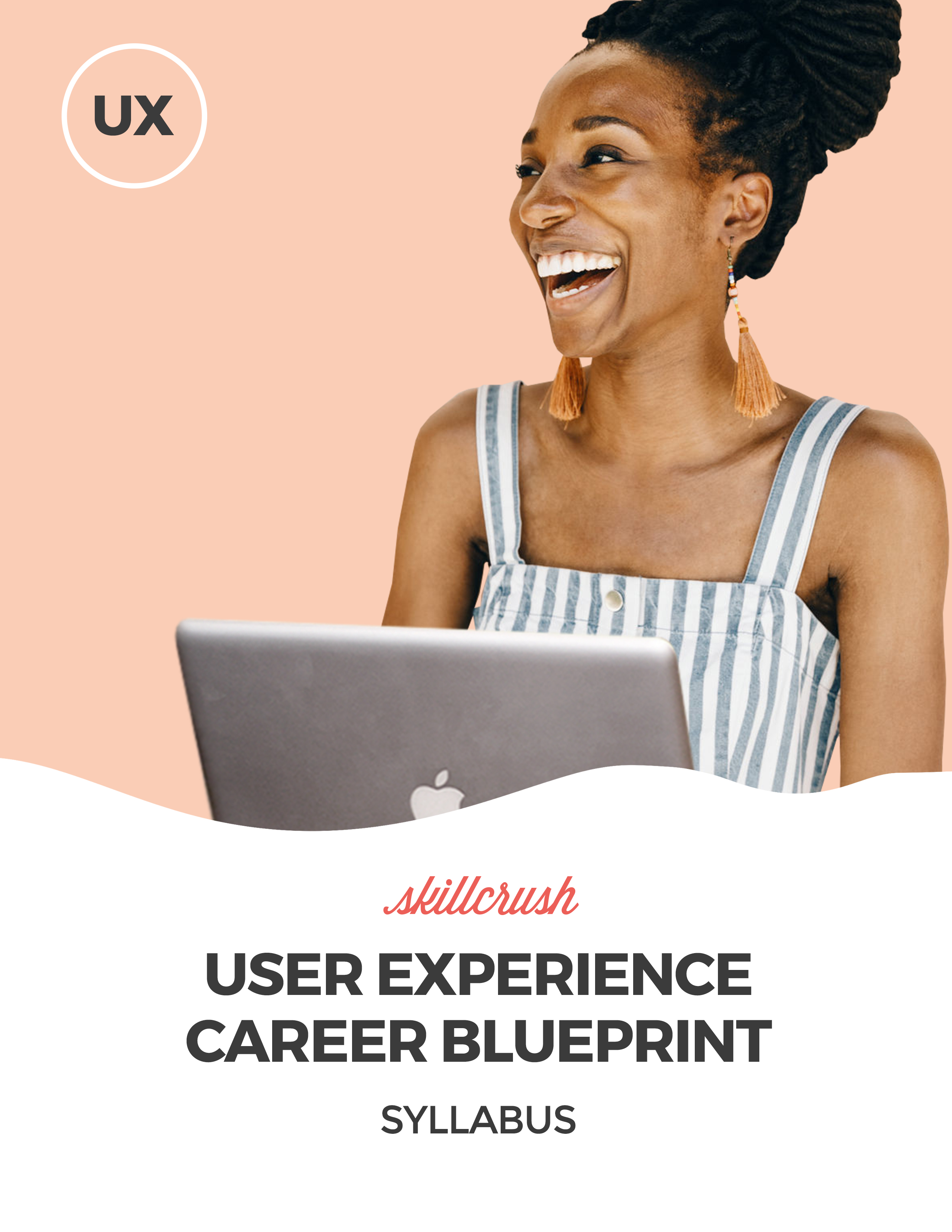
Get the Syllabus to Our Brand New UX Professional Blueprint
Learn more about our exciting new UX Professional Blueprint course with this comprehensive syllabus!
Over and over, I find myself having conversations with people who ask themselves: “Am I creative?” and answer with a resounding. . . “Meh.” Maybe you’re one of those people, doubting your own creativity. But I have news for you: You’re a creative person and you deserve a creative job. It’s just a matter of how you understand creativity—and how you can use it in your life.
I’ve learned to question the definition of creativity. What is it? How do you know if you have it? If you are thinking of the dictionary’s definition, then it’s “the use of the imagination or original ideas, especially in the production of an artistic work.” Personally, I wish that they had omitted the last part referencing artistic work; I think this is where people get tripped up. If they haven’t produced a watercolor, written a poem, or modeled clay into a life form, they cross creativity off their list of strengths.
But that’s not what creativity is about. Creativity is something unique to each of us, and it has a lot more to do with how we understand the world and solve problems than churning out paintings or novels.
Take a client of mine who told me recently that he felt lost among younger creative types in his office who knew graphic design, could come up with new ideas on the spot, and always seemed to be bursting with suggestions.
But as we talked, we realized that many of his colleagues were solid idea generators, but were often lost on how to implement those ideas. And that’s where he would come in. His ability to see connections and understand how to get from idea to finished product was his greatest strength. He was able to creatively manipulate budgets in order to accomplish more projects for less money. He was able to creatively connect separate ideas into one project, utilizing the best of each colleague’s inputs, while streamlining processes and saving money. He was able to creatively shift personnel onto different projects to bring out the best in each team member and maximize results.
But he resisted calling this creativity at first, since it differs from the narrow conception of creativity he was used to. However once he was able to broaden his definition, he soon began bringing me stories of his creative abilities to solve problems and move ideas forward. It was eye-opening for him and brought a new level of confidence to his work.
If we focus on the first part of the definition of creativity, “the use of the imagination or original ideas,” then we understand that creativity is the ability to see that which others cannot. The real question is not “Am I creative?” but rather “Which position, activity, or role best allows me to see what others cannot?” With this question as a guide, you’ll be able to identify areas in which your creativity shines.
The next step is to apply your unique brand of creativity to your life—especially your professional life. That same client identified that his greatest source of creativity was in establishing teams and seeing strengths and weaknesses in collaboration where others could not. This led to putting people together who may not have seemed like obvious fits, but ended up being powerful collaborators. He was building something new—something no one had envisioned. He was being creative.
The painter Henri Matisse said “creativity takes courage.” Indeed, it is one thing to see what others do not, and yet another thing to step into that vision and take action. Creativity requires a certain amount of risk. Creative people must attempt something new and to change the status quo. To do this, one must believe in what they see and be able to get others to buy into it. Once a person has identified that they are, in fact, creative, and that they have something new to offer, they must have the confidence to act upon that realization.
Personally, I have been able to find that confidence in myself and creativity by asking a few simple questions:
- What have I seen/imagined/discovered/created that is new? How is it new?
- Why does it matter? Who does it matter to?
- What do we lose if we do nothing? What opportunities do we miss out on?
- What can we gain by this? How will it change the team/project/organization?
Look for creativity in yourself every day. Where are you able to shine light where others only see darkness? What do you understand intrinsically that others might not? What is obvious to you that others miss? Creativity lives in those places. You may not ever write a sonata or choreograph a ballet, but what you see and imagine is the creativity you bring to the table. Be bold enough to act upon it, and there is no limit to where it can take you.
A version of this article previously appeared on Ellevate Network.

Get the Syllabus to Our Brand New UX Professional Blueprint
Learn more about our exciting new UX Professional Blueprint course with this comprehensive syllabus!

